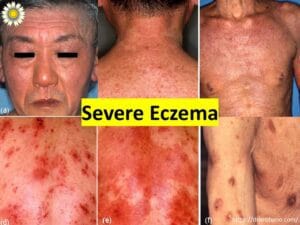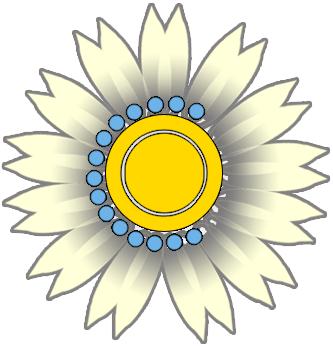5 Telltale Signs of Allergic Rhinitis: Do You Have Them?
Do you often find yourself sneezing multiple times in the morning? Does your nose feel itchy or congested throughout the day? If so, you may be experiencing allergic rhinitis, a common but often underdiagnosed condition.
Allergic rhinitis, also known as hay fever, occurs when your immune system overreacts to allergens like dust mites, pollen, pet dander, or mold. This leads to annoying and persistent symptoms, including sneezing, nasal congestion, and itchy eyes.
While these symptoms may seem like just another cold, there are distinct signs that point to allergic rhinitis. Here are five key indicators that can help you recognize if allergies are the real culprit behind your discomfort.
1️⃣ The Allergic Salute: Constant Nose Rubbing
Ever noticed someone frequently rubbing their nose in an upward motion? This gesture is known as the “allergic salute”—not an offensive gesture, but rather an unconscious habit caused by an itchy, runny nose.
🔹 Why it happens: The irritation from allergens triggers persistent nasal itchiness, leading people to rub their nose for relief.
🔹 Consequence: Repeated nose rubbing can cause a noticeable crease across the bridge of the nose, known as the nasal crease (more on this below).
If you or your child frequently perform the allergic salute, it may be a sign of uncontrolled allergic rhinitis.
2️⃣ Nasal Crease: The Line on the Nose
Look closely at someone who frequently rubs their nose due to allergies, and you might notice a horizontal nasal crease—a faint line that forms across the bridge of the nose.
🔹 Why it happens: Constant nose rubbing causes repeated friction on the skin, leading to the formation of a line or indentation.
🔹 Who gets it: Common in children with persistent allergies, as they tend to rub their nose more often.
A nasal crease is a visible clue that someone may be dealing with allergic rhinitis, especially in children who struggle with ongoing nasal congestion.
3️⃣ Red, Itchy Eyes: Allergic Conjunctivitis
People with allergic rhinitis often have red, irritated, and watery eyes, a condition known as allergic conjunctivitis.
🔹 Why it happens: Airborne allergens like pollen, dust, or pet dander can trigger an allergic reaction in the eyes, leading to inflammation.
🔹 Symptoms: Redness, itching, excessive tearing, and puffiness.
Unlike eye redness from lack of sleep or crying, allergic conjunctivitis is persistent and often accompanied by sneezing and nasal congestion.
4️⃣ Denny-Morgan Folds: Extra Lines Under the Eyes
Have you ever noticed prominent folds or lines under the lower eyelids in people with allergies? These are called Denny-Morgan folds, and they often appear in individuals with chronic allergic rhinitis or eczema.
🔹 Why it happens: Chronic eye rubbing and inflammation cause the skin under the eyes to fold.
🔹 Common in: Children with severe allergies and atopic dermatitis (eczema).
These lines may give the appearance of tiredness, but they are a key sign of persistent allergies.
5️⃣ Dark Eye Circles: The “Allergic Shiner” Look
People with allergic rhinitis often develop dark under-eye circles, also known as allergic shiners. These look like panda eyes or bruises under the eyes.
🔹 Why it happens:
✔ Chronic nasal congestion causes poor circulation around the eyes, leading to blood pooling in the small blood vessels under the skin.
✔ Constant eye rubbing worsens the discoloration.
If someone constantly looks like they have fatigue-related dark circles, but they get enough sleep, it could be a sign of untreated allergic rhinitis.
Information You Can Use
Many people mistake allergic rhinitis symptoms for a cold or just “sensitive skin,” leading to delayed diagnosis and improper treatment. If you recognize these signs in yourself or your child, it’s time to take action:
✅ Identify triggers – Common allergens include dust mites, pollen, pet dander, and mold.
✅ Consider allergy testing – A skin prick test can help pinpoint specific allergens.
✅ Manage symptoms effectively – Medications like antihistamines, nasal sprays, and allergen avoidance can help control symptoms.
✅ Explore long-term solutions – Allergen Immunotherapy (AIT) is the only treatment that modifies the immune system and provides long-term relief.
📌Special Allergy Test Promo: Click here [Limited-Time Allergy Blood Test Promo – RM399]
Final Thoughts

Recognizing the 5 signs of allergic rhinitis can help you differentiate allergies from other conditions like colds or sinus infections. If you or a loved one experiences these symptoms frequently, come see the Allergy Immunology Clinic Team for a proper evaluation and personalized treatment plan.
By spreading awareness about these signs, we can help more people get the relief they deserve!
Share this post with someone who might be suffering from undiagnosed allergies.




